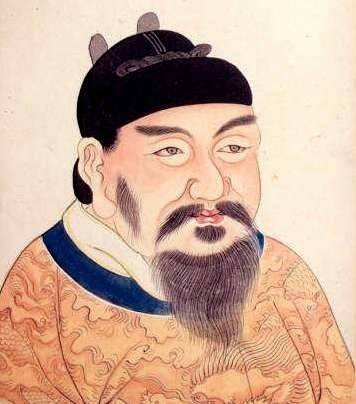Name Ashina Jiesheshuai | ||
 | ||
Kurshad (Ashina Jieshe'er) (Chinese: 阿史那結社爾 / Chinese: 阿史那结社尔 Pinyin: Ashǐnà Jiēshèěr, Wade-Giles: Ashihna Chieh-she-erh, Middle Chinese: (Guanyun) [ʔɑʃi̯ə˥nɑ˩ kiet.ʑi̯a˥nʑi̯e˥]) or Ashina Jiesheshuai (Chinese: Chinese: 阿史那結社率 / Chinese: 阿史那结社率, Pinyin: Ashǐnà Jiēshèshuai, Wade-Giles: Ashihna Chieh-she-shuai, Middle Chinese (Guangyun) [ʔɑʃi̯ə˥nɑ˩ kiet.ʑi̯a˥ʃi̯ue̯t], b: ? – d. 19 May 639) was a member of the Ashina clan of the Eastern Turkic Khaganate and general (Zhonglangjiang) of the Tang dynasty.
Contents
Background
He was one of Shibi Khan's sons and the younger brother of Ashina Shibobi (Chinese: 阿史那什钵苾), who was a vassal khagan of the Tang dynasty and used the title of Tölis Khan. (Chinese: 突利可汗).
Tang China defeated the Eastern Turkic khaganate, which became a vassal of Tang China in 630. During this period, some Turkic nobles were members of the Chinese army. Ashina Jiesheshuai was among these nobles.
Jiucheng Palace raid
By summer 639, as Ashina Jiesheshuai had not been favored by Emperor Taizong (because he had falsely accused his brother Ashina Shibobi of treason, which Emperor Taizong found despicable), he formed a conspiracy with Ashina Shibobi's son Ashina Hexiangu (Chinese: 阿史那賀暹鶻) to assassinate Emperor Taizong at his summer palace, Jiucheng Palace (九成宮, in modern Linyou County, Shaanxi). They had planned to wait for Li Zhi, the Prince of Jin, to depart from the palace in the morning and use that opportunity to attack the palace. On the day they planned, May 19, Li Zhi did not leave the palace due to a storm. Ashina Jiesheshuai attacked the palace anyway, engaging the palace guards, but the guards were supported by troops who came outside. Ashina Jiesheshuai and his comrades stole some 20 horses from the stable. They fled to the north, but were caught by pursuers near the Wei River and killed. Ashina Hexiangu was exiled to Lingbiao.
After this incident, officials began advocating for the sending of Turks (or Tujue, as they were known to the Chinese) away from the heart of the state. In fall 639, Emperor Taizong created a Tujue prince who had served him faithfully, Li Simo (né Ashina Simo) as the khan of a newly recreated Eastern Tujue state as Qilibi Khan, giving him all of the Tujue and Hu who had surrendered as his subordinates, to be settled north of the Great Wall and the Yellow River. The Tujue people were fearful of Xueyantuo and initially refused to go to their new location. Emperor Taizong issued an edict to Xueyantuo's khan Yi'nan that he and Li Simo keep their peace and not attack each other, and after receiving from Yi'nan the assurance that he would not attack, the Tujue people moved to the new location.
Aftermath
Jiesheshuai's rebellion was unsuccessful, but in 681 the Tujue revolted against the Tang dynasty and re-established a Eastern Turkic khaganate.
Cultural influences
A prominent Turkish nationalist, Nihal Atsız, used some characteristics of Ashina Jiesheshuai for a fictional character named Kür Şad in the novel Bozkurtların Ölümü (The Deaths of Gray Wolves). However, in the novel, the father of Kürşad is not Shibi Khan but Chuluo Khan (Çuluk Han).
